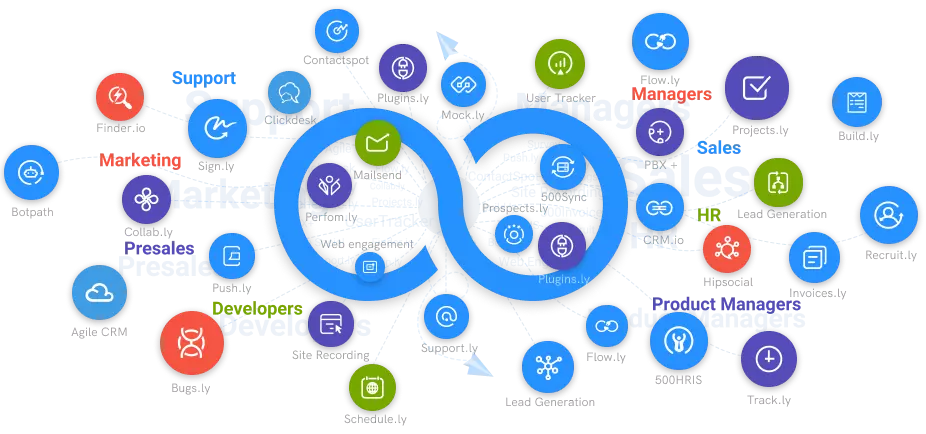Why to Use Email Analytics While Tracking Emails?
Let us understand the use of analytics in email tracking and how it helps in making your marketing campaign a success.
#1
Email Tracking for Gmail
#2
Unlimited & Free Email Tracking Tool
#3
Real-Time Notification System
#4
Compatibility
#5
Daily Report Generation
#6
Advanced Tracking System
#7
Access to Receipts
#8
Full-Fledged Tracking System
#9
Unbelievable pricing - the lowest you will ever find
#10
Everything your business needs - 50 apps, 24/5 support and 99.95% uptime
Email analytics is a technique for measuring how subscribers respond to your email marketing. With the aid of bulk email providers, you may collect and analyze data for each email campaign. You can't total up your email marketing efforts without examining emails, giving you a hazy and incorrect picture of how well things are working for you.
Email analytics and reports gives a wealth of data as a foundation for improvement, including user engagement and loyalty, typical behavior patterns, and the strengths and weaknesses of your content. With such insight, you may use sophisticated behavioral segmentation to deliver a more tailored experience to your subscribers. As a consequence, email analytics will aid your company's growth since people will be more engaged with your brand and hence more inclined to acquire your products or services. You can't total up your email marketing efforts without examining emails, giving you a hazy and incorrect picture of how well things are working for you. Email analytics gives a wealth of data as a foundation for improvement, including user engagement and loyalty, typical behavior patterns, and the strengths and weaknesses of your content. With such insight, you may use sophisticated behavioral segmentation to deliver a more tailored experience to your subscribers.
Email analytics tools associated with email marketing software are the most convenient method to track how effectively your email marketing campaigns perform. Emails can also be tracked using a Google Analytics account. The tools that come with email marketing software, on the other hand, are frequently the simplest and most cost-effective ways to track email marketing effectiveness.
The answer to the question of what is the most essential statistic to track in email marketing is, it depends. The most essential statistic to track in email marketing varies with every organization and depends on your goals. A new firm, for example, maybe satisfied with high open rates, but more established organizations that have been conducting email marketing for some time focus on conversions as a success element.
Parameters to Look for in Email Analytics
1. Deliverability of Emails
It is the proportion of emails delivered to recipients' inboxes as a percentage of total messages sent. This information is influenced by the authority of your email service domain and your sender's reputation. Deliverability is defined as the proportion of emails that reach subscribers' inboxes versus the total number of emails sent. Simply sending an email does not guarantee that it will be sent. Email deliverability is affected by a number of factors, including: - An invalid email address - Filters for content - Overflow in subscriber's inbox
IP addresses are being banned from the subscriber's server as a result of complaints or excessive traffic from a single source. The mail delivery rate is computed by dividing the number of delivered emails by the total number of emails sent and multiplying the result by 100. Most email marketing software solutions will calculate this data for you automatically. Mailchimp's reports, for example, offer a reporting line called "Successful Deliveries," which includes the total number of emails that were successfully sent, as well as a percentage.
2. Open Rate
It shows the difference between the number of opened emails and the number of delivered emails. Create fascinating subject lines that are related to the email's content to promote more open. The number of emails opened by the subscribers to whom they were sent is referred to as the email open rate. It may be examined using a trackable URL. The open rate is a measure of engagement. What your email marketing goals are will affect your engagement rate. Maintaining daily analytics report helps in improving email tracking while running campaigns.
Several factors influence the email open rate, including:
- A current email list
- Subject lines that are both catchy and engaging
- Contact lists that are segmented
- Email subject lines and body text that avoid spam triggers
- Sending the appropriate emails at the right time - both day and time are important
- Personalization
- Optimization for mobile devices
- Preview text for the header
3. Click-Through Rate (CTR)
It shows how many people clicked on the links in your email. Create material that is relevant to the interests of your readers. To attract people to visit your website, combine instructional and promotional resources. Another engagement metric is the click-through rate, which is the percentage of people that click on a link in your email.
To increase your click-through rates, do the following:
- Consider email layout - emails should be tested and prepared for all devices.
- Your contact lists should be segmented.
- Make your emails more personal.
- Send your emails at a time when they are most likely to be opened by your intended audience
- Incorporate compelling calls to action.
4. Bounce Rate
The number of emails that were not sent is shown by this statistic. There are two kinds of bounce: harsh bounce and gentle bounce. A hard bounce indicates that the email address or domain name of the receiver is invalid. To deal with just genuine addresses on your mailing list, use double opt-in and delete invalid ones. A gentle bounce indicates that there are temporary difficulties, such as an overflowing inbox or server maintenance on the recipient's end. A high bounce rate (greater than 2% ) may raise suspicions from your email provider, and your domain may be barred from sending emails; only utilize the most up-to-date email list data, and keep this analytic under constant scrutiny.
Furthermore, to keep your bounce rate low:
- Remove any emails that have bounced from your email list.
- Require list subscribers to confirm their email address using a double opt-in procedure that provides them a link to confirm their email address
- Use a reputable email service
- Do not purchase contact lists
- Utilize an email marketing platform that allows subscribers to select which emails they wish to receive from you (e.g., weekly promotions or monthly newsletters).
5. Conversion Rate
This is the number of subscribers who become clients. However, any activity, such as registering after clicking the partner's link in your email newsletter, might qualify as a conversion.
Follow these four methods to boost the number of conversions from your email marketing campaigns:
- Always generate material that is beneficial.
- Use strong calls to action.
- Make material that is tailored to your intended audience.
- Make sure your web pages load quickly.
Our email tracking extension, OpenedOrNot, comes with the best email analytics and report feature that helps you to track the emails sent to your customers with ease helps to get insights on how your campaigns are doing and who are the hot leads for your business.





